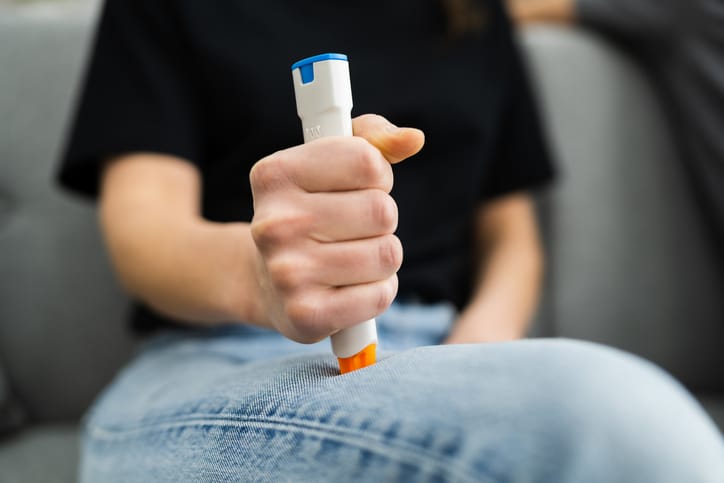If you live with systemic mastocytosis (SM), you are aware of the importance of being prepared for a severe symptom episode.
SM symptoms can cause pain and discomfort, but anaphylaxis can be life-threatening if not treated immediately. It is important to know when an allergic reaction is anaphylaxis, requiring an emergency response and a clear plan of action to follow.
What is SM?
Systemic mastocytosis (SM) is a rare hematological disease characterized by mast cells that are overactive and accumulate in different parts of the body such as the bone marrow, liver, spleen, gastrointestinal tract and lymph nodes.
How to recognize anaphylaxis
Anaphylaxis can happen in seconds or minutes. As the body’s mast cells react to an allergen or trigger such as pollen, insect sting or certain foods and medications, histamine and other chemicals are released into the bloodstream.
Read more about SM signs and symptoms
This can cause the body to go into shock, with blood pressure dropping and the airways narrowing. You may have difficulty breathing or an itchy rash. Other possible symptoms include nausea, vomiting, fainting, dizziness or palpitations.
Preparing an emergency action plan
Your doctor will support you in preparing a personalized emergency action plan to follow if you have a severe SM symptom episode such as anaphylaxis. When you have clearly defined your plan, be sure to share it with your family, colleagues and close friends. Carry a copy with you at all times.
Essential information in your emergency action plan includes the following.
- Your personal information: Label your SM emergency plan with your name and contact details. Include your social security and health coverage details.
- Your health care team’s information: Compile the names, areas of expertise and contact details of your health care team.
- Emergency contacts: Give full contact details of whom to contact in the case of an emergency.
- Medical information: Add your SM diagnosis, symptoms and common triggers.
- Medication: List all medications and dosages (not just SM-related medication).
Make sure you carry your medication and two doses of epinephrine. These could be the difference between life and death in the case of a severe allergic reaction.
Include instructions in your action plan so that if you are unable to manage the reaction, you are sure you will receive the right care.
If anaphylaxis occurs, the following steps are key.
- Lie down and elevate your legs.
- Use the epinephrine auto-injector.
- Call 911 and emergency contacts.
- Administer a second dose of epinephrine if you have no response after five minutes.
- Go to the hospital for observation (four hours minimum).
Immediate intervention is crucial to a positive outcome if anaphylaxis occurs. If you are unsure, administer the epinephrine dose anyway: It may help prevent the onset of a severe reaction.

